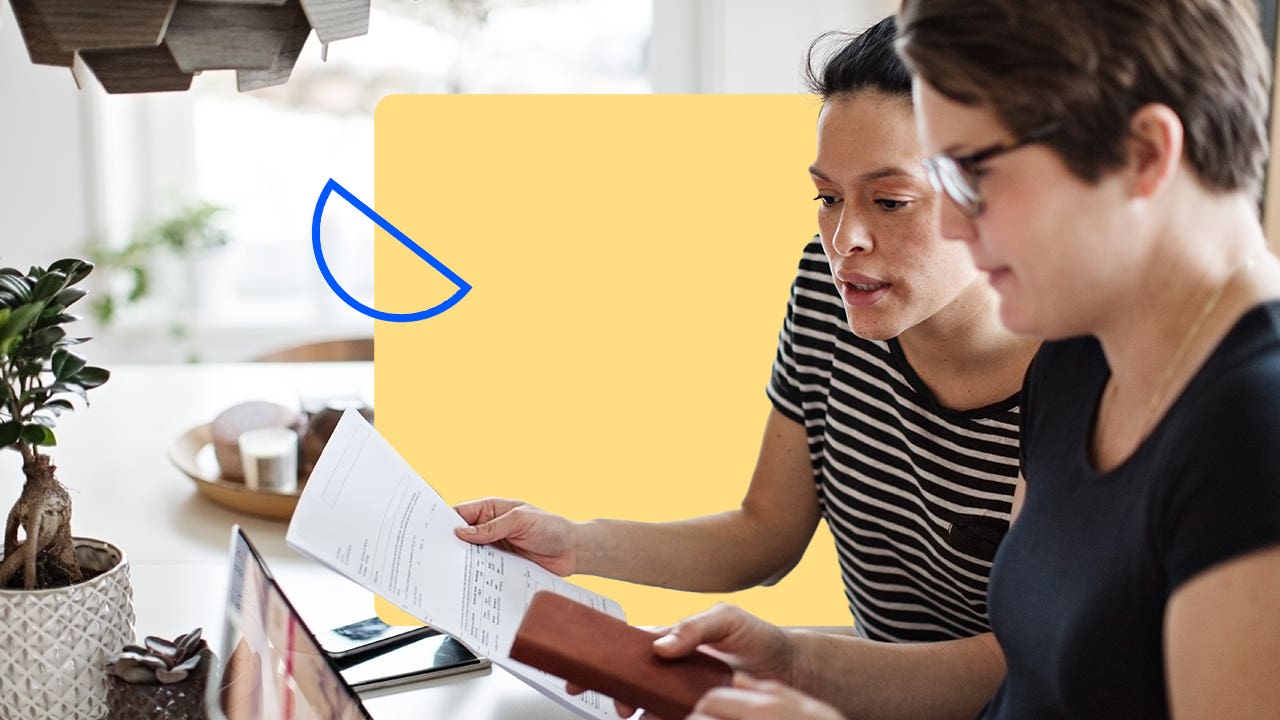41% of homeowners saved specifically for their first home. Here’s how renters can do the same

The Bankrate promise
At Bankrate we strive to help you make smarter financial decisions. While we adhere to strict , this post may contain references to products from our partners. Here's an explanation for .
Key takeaways
- Saving for a house while also paying rent is challenging, but there are ways to cut costs and increase income to reach your goal.
- Different types of mortgages have different down payment requirements, and a full 20 percent of the home's price may not be required.
- Assistance programs and grants are available in every state, especially for first-time homebuyers.
For many renters, saving up for a down payment on a home is a serious challenge. Around two in five (41 percent) of current homeowners said they saved intentionally to be able to afford the down payment and closing costs on their first home, according to a Bankrate survey.
But that can be hard to do when you’re also paying rent. According to Zillow’s monthly Observed Rent Index, the typical U.S. rent in February 2024 was $1,959, a 3.5 percent year-over-year increase. And home prices keep rising, too: The National Association of Realtors reports that the median existing-home price for the same month was $384,500, the highest February median on record. Add in stubbornly high mortgage rates, and buying your first home can feel like an impossible goal.
Homeownership “has always been the American dream, but it kind of feels out of reach for a lot of people,” says Jennifer Fraser, director of stakeholder engagement for GreenPath Financial Wellness in Farmington Hills, Michigan. That doesn’t mean you should despair, though. There are still ways to save money or get assistance to afford a down payment. Let’s explore how to save up for a house while you’re renting.
The down payment
This upfront payment is often the biggest hurdle for first-time buyers. The down payment you’ll need depends on the kind of loan you’re seeking and the price of the home you’re hoping to buy. While 20 percent of the home’s price isn’t mandatory, you typically need to put down at least that much to avoid the additional cost of private mortgage insurance. On a median-priced home of nearly $400,000, that is a hefty sum: $80,000.
Different types of mortgages have different down payment requirements, though, and many require a much lower percentage. Qualified borrowers may be able to put down just 3 percent, which means you may be able to save up over a shorter timeframe. Keep in mind, however, that the more you are able to put down upfront, the less you’ll have to borrow.
If you’re not sure which mortgage is right for you, talking to a loan officer can help you narrow down your options, says Juan Carlos Cruz, founder of Britewater Financial Group in Brooklyn, New York.
Determining how much house you can afford will help you estimate how much you need for a down payment. You can use Bankrate’s affordability calculator to help figure out a realistic budget.
Take some time to research down payment assistance programs — every state has one.— Jeff Ostrowski, Principal Writer, Bankrate
“Also, take some time to research down payment assistance programs,” says Jeff Ostrowski, Bankrate’s senior industry analyst and the author of the down-payment survey. “Every state has one, as do some employers and municipalities.” The survey found that 14 percent of homeowners took advantage of down payment assistance or a first-time buyer grant to help pay for the down payment and closing costs on their first home.
Other costs to consider
Aside from the amount of your down payment, you’ll need to take into account these additional costs when buying a house as well:
- Closing costs: Every real estate purchase comes with some closing costs. For homebuyers, these expenses will mostly be fees related to the property and the mortgage loan, such as title-related fees and the cost of a home appraisal and inspection. According to the most recent data from ClosingCorp, the national average for single-family-home closing costs in 2021 was $6,905 (including transfer taxes), or $3,860 (without transfer taxes).
- Property taxes and homeowners insurance: Both will be regular expenditures that you’ll want to budget for. The costs for each varies greatly depending on your location.
- Moving costs: The cost of moving can sneak up on you. Hiring a professional for a local move runs about $1,694 on average, HomeAdvisor reports. Long-distance moves will cost more.
- Repairs and upkeep: Once you move into your new home, you will also have to take care of regular maintenance and address any needed repairs, so be sure to have some extra funds stashed away. And remember that if you’re moving into a larger space, you might need to spend some money on additional furnishings, as well.
How to save for a house while renting
Saving for your first home while still paying rent can be a balancing act. “Rents shot up during the pandemic and have stayed high for the past couple of years,” says Ostrowski. “For tenants, that means it’s tough to afford the rent and save for a down payment.”
Other ways people paid for the down payment and closing costs for their first home included receiving the money as a gift from family or friends, or receiving a first-time buyer grant or loan assistance program, according to Bankrate’s survey:
6 steps to follow
1. Open a down payment savings account
Once you have a down payment amount in mind, open a savings account to “help you keep track of how much you’re saving and your progress,” Cruz says. Otherwise, you might be tempted to dip into your down payment fund to pay for recurring, or even unnecessary, expenses.
Keep in mind the type of account you’re putting your money in. Many online banks offer higher interest rates on savings accounts than brick-and-mortar banks do, so your savings may have more opportunity to grow with an online account. Consider a high-yield savings account as well. And if you recently got a pay raise, tax refund, work bonus or cash gift, stash that in your savings account, too.
2. Look at where you can cut back
It’s important to examine your discretionary spending and see if you can make cuts, such as Netflix or morning lattes, says Miriam Mitchell, chief lending officer at Addition Financial Credit Union in Lake Mary, Florida. It’s likely “you can find a lot of savings in there to build a down payment fund,” she says.
“If you’re an aspiring homeowner on a tight budget, look for low-hanging fruit in your budget,” says Ostrowski. “Maybe find a way to cook rather than ordering in, or invite friends over for drinks rather than going out to the bar.”
Consider shopping for cheaper auto insurance or a less expensive cell phone plan, too. You may find you’re able to cut costs on these seemingly “fixed” bills, and can put the difference toward savings.
3. Address your debt
Take a look at your debt to find areas to cut costs as well. If you have a balance on a high-interest rate credit card, consider doing a balance transfer, Mitchell says. Many cards offer 0 percent interest on balance transfers for a set period of time, such as 12 or 18 months, although they typically charge a fee between 3 percent and 5 percent of the amount transferred.
Similarly, avoid adding more debt to your name. To qualify for a mortgage, you’ll need to meet the lender’s debt-to-income (DTI) ratio requirement, and the less debt you have relative to your income, the better. You can use Bankrate’s DTI ratio calculator to estimate where you stand. Generally, lenders want to see a DTI ratio below 43 percent.
4. Go beyond your day job
If you don’t have much wiggle room in your budget as a renter, you can try bolstering your savings by earning some extra money. Check out gig economy jobs that are in demand, such as delivering food for GrubHub or DoorDash, Mitchell suggests.
Consider things you no longer use that you might be able to sell, too. “Everybody’s selling stuff on local websites,” Fraser says. “Little side hustles are a fabulous way to bring in a bit of extra cash.”
5. Make bigger changes
If you’re eager to save up for a home fast, you may want to take more sweeping measures. Consider getting a roommate, for example, to help split the rent and other expenses, or even moving into a smaller, less expensive rental to save money each month.
If a move is out of the question, you might even try renegotiating your lease with your landlord. This can sometimes work well if you’ve been a great tenant, and landlords may be more willing to negotiate if it means they can lock you in as a tenant for a longer period of time.
6. Apply for assistance programs
Many mortgage lenders have first-time homebuyer programs that can help cover a portion of your down payment. These might require you to occupy your home for a certain period of time to avoid having to repay the money, Cruz notes. Other forms of assistance, such as grants, may require you to complete an education course before receiving the funds.
Your field of work might be in your favor, too. Some programs provide assistance to homebuyers in certain occupations, such as teachers or first responders. “A lot of lenders are looking to reach out to underserved and diverse communities to improve opportunities for homeownership,” says Fraser. If you’re in one of these roles, there may be assistance available specifically for you. DownPaymentResource.com can help you find assistance programs in your area.
FAQs
-
Saving to buy a home while renting is challenging, but it is possible. Start by looking into programs in your area that offer assistance in covering down payments and closing costs. Many of these programs are specifically designed for first-time homebuyers. It can also help to open a savings account specifically for your down payment fund: According to Bankrate. 41 percent of current homeowners said they spent time saving specifically for the down payment and closing costs on their first home. Intentional saving lets you wait to buy a house until you know you are financially ready.
-
Renting-to-own means you start out in your home as a renter, and — after a specified period of time — end up as the owner. Typically a portion of your rent is set aside to be applied to a down payment at the end of the lease term. This can be a good idea in that it gives you time to build up your savings, boost your credit score and pay down your debt. However, many rent-to-own contracts are quite strict in their terms, and you risk losing the money you put toward the purchase.
-
The answer depends heavily on the price of the house, the amount of your down payment and the type of mortgage loan you get. The traditional down payment, 20 percent of the home’s price, can be an overwhelming amount to save — but luckily, many loan products require much less. For example, with a conventional loan, qualified borrowers can put down just 3 percent of the home’s price. On a $300,000 home, that’s a difference between $60,000 and just $9,000. Keep in mind, though, that the more you’re able to put down upfront, the less you’ll have to borrow.
Related Articles



